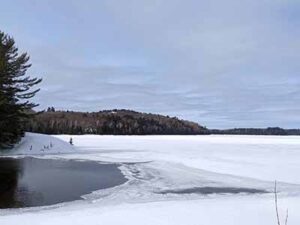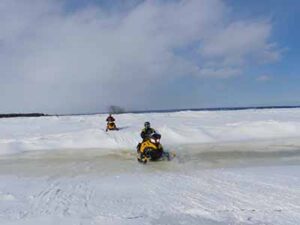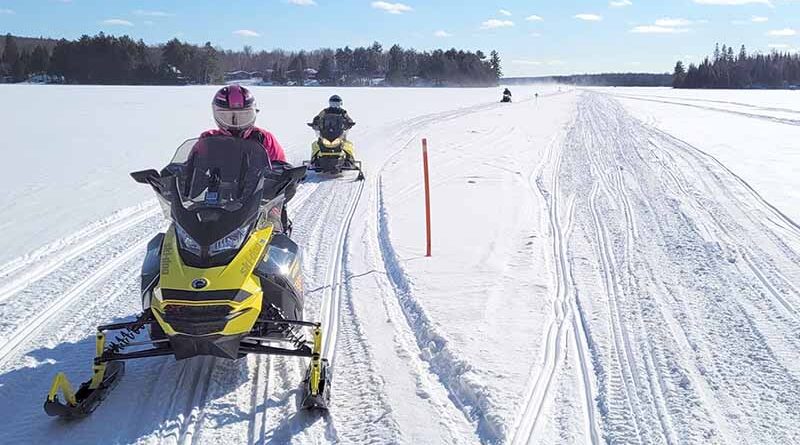Ice Survival Myths
When waterways freeze over, they are tempting playgrounds for snowmobilers and other winter enthusiasts. But too many ice travellers perish in preventable drowning incidents after suddenly plummeting into frigid water. Hopefully, dispelling prevalent ice survival myths may help avert unnecessary tragedies this winter.
“I Know This Lake Like The Back of My Hand.” Familiarity breeds contempt. Case in point: three adults drown in one heart-breaking incident several years ago. These locals had travelled that lake countless times while snowmobiling and ice fishing. But unexpected variables weakened ice and it was game over.
“What Goes Down Must Come Up.” Many snowmobilers have false security about falling through bad ice or into open water. But drowning is a real probability. Ask yourself: How far from the ice edge does a moving snowmobile carry me? What disorientation occurs from the shock? While sinking, how do I know which way is up? If I do surface, which way is safety? How long can I tread water?
And hope no other snowmobiles follow you in, because one could crunch your head as you try coming up for air. And if you break through ice, your trajectory will probably be at an angle away from the entry hole. If you’re lucky, and there’s no current, maybe you’ll find the hole before you need to breathe again.
“I’m Strong Enough To Get Myself Out.” Maybe — if you don’t panic when your helmet fills with ice water. Or when your body’s involuntary gasp reflex waterlogs your lungs. Or the weight of soaked snow gear drags you down. Cold will sap muscle power faster than you ever imagined. You’ve got less than a minute before you start to lose it.
It’s not easy to extract yourself. As the cold saps your strength and dulls your mind, you have only seconds. So, use all of your power to kick your legs and heave yourself out like a seal — and hope you can get a grip, if the ice edge holds under your weight. Ice picks can certainly help.
“My Buddies Will Help Me.” What if they go in too? Or don’t see it happen? Or don’t have rescue ropes. Or are too scared or panicky to act fast enough. Going for help will likely take too long.
“Emergency Personnel Will Rescue Me.” Some first responders aren’t trained for ice rescue. If not, their ability to help may be limited for safety and liability reasons. Also, responders may not be readily available, know exactly where you are, or be able to find nearby lake access. So you’re likely on your own for those first few critical minutes that make the difference to survival.
“My Buoyant Suit Will Save Me.” Flotation may buy you a few extra minutes, but it won’t get you out. So unless help arrives, you’re still on your own.
“I’ll Be Safe When I Get Out.” If you are able to self-rescue, hypothermia could be deadly unless you can warm your body core immediately.
I frightened myself with these harsh realities. Here’s sound advice for ice travel: “No ice is 100% safe”, “Know before you go”, “Never go alone”, “Always follow the stake line” and “Don’t outride your headlights after dark.”
Learn More About OFSC Prescribed Trails At: Ontario Federation of Snowmobile Clubs – www.ofsc.on.ca
Craig Nicholson, The Intrepid Snowmobiler, is an International Snowmobile Hall of Fame journalist and a long-time Kawarthas cottager who also provides tips and tour info for snowmobilers at intrepidsnowmobiler.com and for PWC riders at www.intrepidcottager.com.
Photo Credit Craig Nicholson




